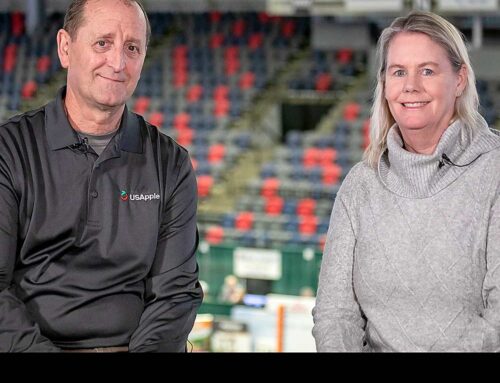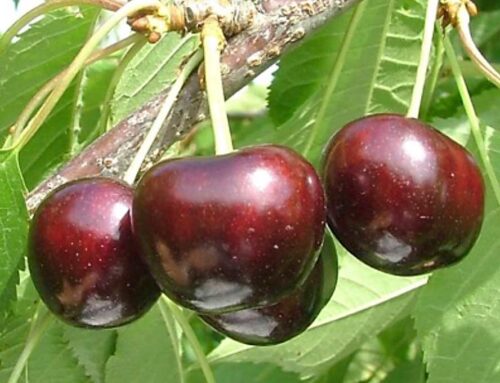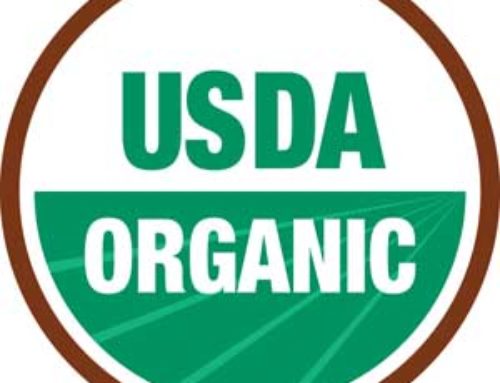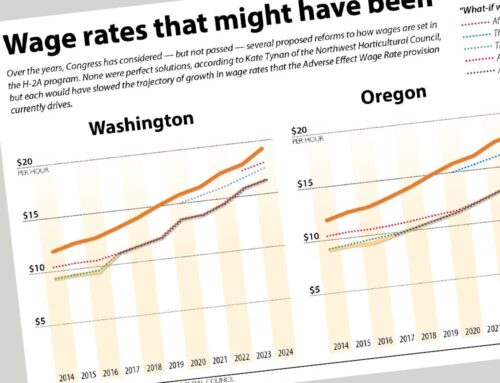Chelan County is one of two counties in Washington State that are implementing a new program to promote environmental stewardship on farms.
Mike Kaputa, Chelan County Natural Resources Director, is encouraging fruit growers and other farmers to participate in the new Voluntary Stewardship Program (VSP), rather than have environmental regulations forced on them.
The state’s Growth Management Act requires state and local governments to manage growth by identifying and protecting critical areas and natural resource lands, and regulating the use of those areas. For example, plans to build houses or commercial industry in or near critical areas would be subject to a review and permitting process.
Orchardists have felt little impact from the GMA, other than being unable to subdivide property into lots smaller than five to ten acres. Farming activities are not regulated under the GMA because they are either grandfathered in or exempted.
In 2007, after environmental groups filed lawsuits and lobbied to include agriculture in the regulations, the State Legislature asked the William D. Ruckelshaus Center, a collaborative effort of Washington State University and the University of Washington, to help resolve the conflict.
The center proposed the Voluntary Stewardship Program, a watershed-based, collaborative planning process that uses incentives to preserve the viability of agriculture while protecting environmentally critical areas.
Twenty-eight of Washington’s 39 counties plan to join the program. The Washington State Legislature has earmarked $249,000 to enable Chelan and Thurston counties to begin to implement the program this year. The two counties are developing work plans that include goals and benchmarks for protecting critical areas.
Critical areas include wetlands, riparian setbacks (along streams), geographically hazardous areas, such as steep slopes and areas with unstable soils, and conservation areas for fish and wildlife.
More state and federal funding is expected to become available to expand VSP to other counties.
Permits
Speaking at tree fruit meetings in Wenatchee this winter, Kaputa emphasized that if farming practices were not exempted from the GMA’s critical area regulations and had to follow county zoning and land use regulations, growers would need to obtain permits or variances from county planning departments and would have to go through the county hearing examiners to obtain them.
Activities requiring a permit might include planting trees, building roads, relocating wind machines, or clearing brush along a creek, for example.

Mike Kaputa
“There’s any number of examples of things you do in your business that would be subject to critical-area regulations,” he told growers at the meetings. “You would have to come down to the planning department and meet with the planner and explain your proposal to the planner against the permit criteria that we have on our books.
“Planners aren’t bad people, but they don’t know your business, so that’s not a good fit,” he added. “I want to be clear that the county does not support having growers go through this kind of process.”
The county has mapped agricultural lands in Chelan County and identified where critical areas intersect with farmlands. The VSP won’t apply to everyone, Kaputa said. For example, in the Chelan area, only 3 percent of the agricultural land is within 100 feet of a water body. But many farmers are close to upland mule deer habitat.
Kaputa said growers are already taking measures to protect critical areas, either as a result of local planning efforts or conservation practices done to comply with certification programs such as Global Gap, and that might be all they need to do. In general, tree fruit industry practices exceed the conservation practices recommended by the Natural Resource Conservation Service.
Growers excel in water management and ground management, he said. “They do a great job already, and we’re trying to capture all the things that people are already doing. We feel very confident that what folks are already doing—if they continue to do those things—will meet the standards of the VSP.”
He urged growers to participate in the program.
“Participation rates are going to be very important to us,” he said. “Consider the consequences of not participating and the planning process you would have to go through to get permits.”
Opportunity
Keith Goehner, a pear grower in Dryden, located in the upper Wenatchee Valley, and a Chelan County Commissioner, said the county felt the program was an opportunity for local people to shape their own plan, rather than having it mandated by the state.
“We hope that the growers will not have to do anything, and we’re already more than in compliance with what the anticipated activities will be,” he said, noting that most farming practices are already well documented and are more focused on environmental stewardship than they were three or four decades ago.
“The way we do things now is totally different from in the old days,” he said. “We do a more careful analysis of the soil and water management. As a grower you’re very cognizant of all these issues because it does affect your ability to produce a good product.”
External funding will be available, and the only cost to growers who participate will be their time. Kaputa said the county will try to minimize time involved.
Kaputa emphasized that the plan will focus on stewardship efforts at the watershed level, not on individual growers’ property. Chelan County is focusing on the Lake Chelan, Wenatchee, Entiat, Squilchuck/Stemilt, and Colockum watersheds.
“We don’t want to be in a position where we’re monitoring individual growers,” he stressed. “We want to meet overall watershed objectives. When we identify our benchmarks, we want to develop them at the watershed scale and not be so specific that the individual grower is under the microscope.”
The program has the support of several organizations, including the Washington State Farm Bureau, Chelan-Douglas Farm Bureau, Washington State Tree Fruit Association, the Natural Resources Conservation Service, as well as Indian tribes and individual growers.
“We’re excited about it,” Kaputa said. “This is a great alternative to the regulatory route. We think it’s better.” •






Leave A Comment